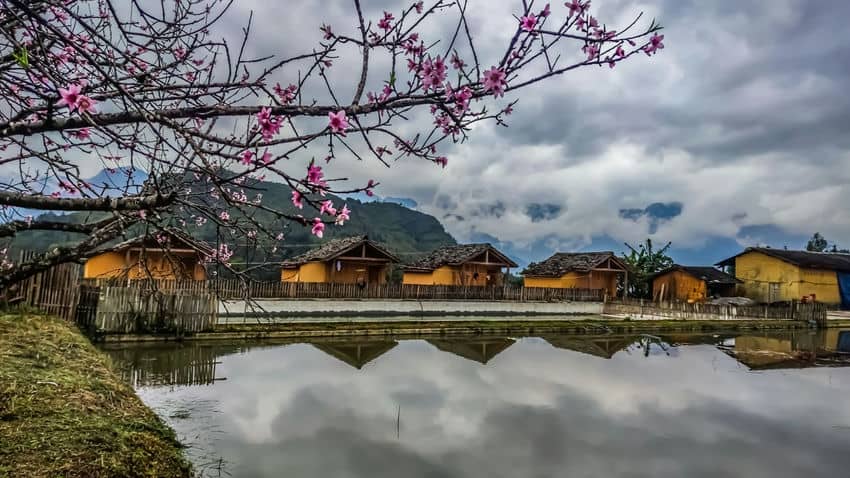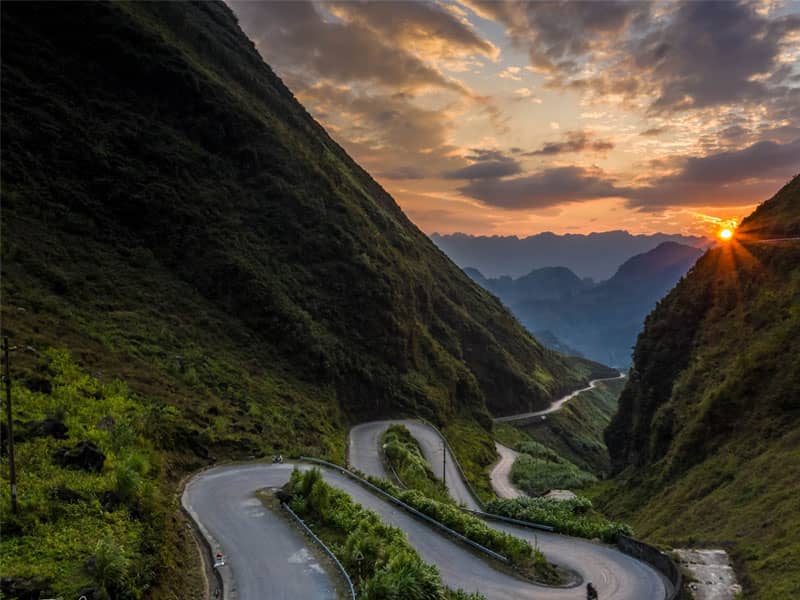Beyond the Asphalt: A 3-Day Journey into the Heart of Hà Giang
The Ha Giang Loop isn’t just a motorbike route — it’s a breathtaking ribbon of road carved into Vietnam’s northernmost mountains, where limestone peaks scrape the sky and each bend reveals a new wonder. But what many first-time visitors don’t realize is: Ha Giang is not just a ride – it’s a cultural journey.
Hidden beneath Ha Giang’s towering cliffs and winding passes is a living world of cultural richness, where the H’mong, Dao, and Lo Lo people carry centuries-old traditions in every woven cloth, mountain home, and bustling market. If this is your first time doing the Ha Giang Loop, take it slow. This three-day journey isn’t just about the thrill of the ride — it’s an invitation to slow down, meet the people of the mountains, and glimpse life through their eyes.
Day 1: Ha Giang – Quan Ba – Yen Minh
Begin with winding roads, limestone peaks, and a warm dinner in a H’mong home.
Your journey begins in Ha Giang City, heading north toward the first stop: Heaven’s Gate Pass and the legendary Twin Mountains of Quan Ba – known for their fairy-like curves and local folklore.
En route to Yen Minh, make a stop at Lung Tam village, home to H’mong women who still hand-weave hemp and dye their fabrics with natural indigo and beeswax. It’s not just textiles; it’s living heritage in your hands.
Tonight, stay in a local homestay in Yen Minh. This isn’t just a place to sleep – it’s your first window into mountain life. As evening settles over the mountains, your hosts serve a home-cooked meal and pour their own corn liquor — and if the mood is right, someone may lift a traditional pipe and fill the silence with song.
Want to impress your hosts? Try learning a few words in H’mong like:
“Nyob zoo” – hello | “Ua tsaug” – thank you
(They’ll love it.)
Day 2: Yen Minh – Pho Bang – Sa Phin – Đong Van
Step into quiet border villages, explore the former palace of a H’mong king, and dive into the vibrant rhythm of highland markets.
Your second day winds through Pho Bang, a quiet border village where time seems to pause among weathered clay homes and faded rooftops that whisper of a once-thriving past. It feels like time stopped here.
Next is the H’mong King’s Palace (Dinh Vua Meo) in Sa Phin, an architectural gem that blends H’mong, French, and Chinese elements – once the seat of local power and pride.
Arrive in Dong Van Old Quarter by late afternoon. If it’s a Sunday, you’re in luck – it’s market day, when H’mong, Dao, and Lo Lo people flood the square in colorful embroidered clothes. You’ll hear laughter, bartering, the scent of grilled meat and thang co (a traditional stew), and the soulful notes of traditional instruments.
Spend the night at a locally run homestay tucked within the historic lanes of the Old Quarter. If you choose the right one, there might be a bonfire, folk music, and corn cakes (bánh tam giác mạch) made from the flower fields you’ve seen all day.
Cultural Tip:
Rather than snapping a photo unannounced, try connecting first — even a nod or brief interaction can turn a moment into a memory, not just an image.
When stepping into a local home, greet your hosts warmly and take off your hat — it’s a quiet way to show appreciation for their welcome.
Avoid sitting in the center of the house or near the family altar unless invited
Day 3: Dong Van – Ma Pi Leng – Meo Vac – Ha Giang
Cliffs, rivers, and one last market before saying goodbye.
Wake up early to ride the legendary Ma Pi Leng Pass – one of the four greatest mountain passes in Vietnam. From here, you’ll witness the Nho Que River snaking through the deepest canyon in Southeast Asia. There’s a stillness that settles in when you see it — as if the mountains themselves are asking you to pause.
Down below, you can kayak or take a traditional boat through Tu San Canyon, an awe-inspiring rock corridor carved by water over millions of years.
If it’s Sunday, don’t miss Meo Vac market – the largest in the region. Markets like this aren’t just for selling goods — they’re lively social gatherings where people from different villages come to catch up, share a drink, exchange stories, and dress in their most colorful traditional outfits. It’s a living mosaic of color, sound, and spirit.
As the road leads you back to Ha Giang City, you carry more than souvenirs — you bring with you stories written in stone, wind, and shared smiles.

More than a ride – Hà Giang is a feeling
The Ha Giang Loop isn’t just a scenic route – it’s a journey into the soul of northern Vietnam. When you say “nyob zoo,” when you sit on a wooden bench and share rice wine with your host, when you warm your hands near the fire with someone who doesn’t speak your language – that’s when Ha Giang becomes yours.
Don’t just travel through Ha Giang. Let it travel through you.
What should you prepare – culturally & practically?
Warm layers – especially from October to March
A small, flexible backpack – easier to manage on motorbikes
Book homestays with traditional or cultural experiences
Try to plan your trip around Sunday markets (Dong Van, Meo Vac)
Learn a few cultural norms: always greet the host, don’t barge into homes, ask before photographing
Memorize a few words in the local dialect – it opens doors and hearts




.jpg)



